Help me save my blue spruce
Spoiler alert—it might not be possible.

The Michigan State University Plant & Pest Diagnostics lab receives roughly 75 spruce samples a year from those looking to right all that is wrong with their spruce trees. There are also countless phone calls and emails made to the lab, Michigan State University Extension educators and specialists. The reality is not all ailing spruce trees can, or should, be saved. In most cases, there is no silver bullet to cure the affected tree.
Tree identification matters
Before we get too far, it’s important to ask—do you really have a spruce? Not a pine, fir, arborvitae or any of the other conifers that grow in Michigan. This matters a lot and yes, there is a difference. If you aren’t sure what type of tree, you can refer to this MSU Extension article, “Pine, spruce or fir: Getting to know Michigan evergreen trees.”
Each conifer has its own set of possible problems. If the tree you are concerned about isn’t really a spruce, the information in this article may not apply to you. To be more specific, there are many different types of spruce, however, Colorado blue (Picea pungens) spruce growing in Michigan have the largest array of potential problems.
Conifer growth habits
To make an educated plan for your declining spruce, you need to understand how a spruce tree grows. Each spring, spruce trees produce new shoots and needles from buds (needlecast pathogens enter the spruce through this young succulent tissue) that were formed the previous year. These buds are only produced on the ends of live branches. This means that if your tree is bald on the inner sections of branches, it will remain so; it isn’t going to produce new shoots or needles inside the canopy.
Dead branches will also not be replaced; trees with dead branches in the lower part of the canopy will remain bare in those areas. Some people choose to prune out dead branches on the lower part of the tree, creating a look that some refer to as lollipop trees. If the aesthetics of lollipop trees are not acceptable, then your options are limited. Instead of trying to save your tree, your efforts will be better served putting careful thought into tree removal and possibly replacement.
Environment
The location and environment within which a tree is growing have significant effects on tree health. As a result, trees in urban environments may have shorter life expectancy. The impacts of poor planting practices may go unnoticed until trees are considerably larger and are stressed by limited root development, predisposing them to pest and pathogens.
Spruce diseases
As previously mentioned, there are several potential pathogens that can affect blue spruce. Rhizosphaera and Stigmina are commonly found on spruce needles in landscapes throughout Michigan.
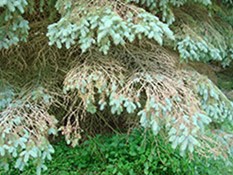

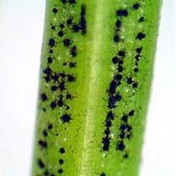
Rhizosphaera causes needlecast of spruce, the impact of Stigmina is not well understood but it is consistently found on declining spruce needles. Rhizosphaera infects spruce needles as they develop in the spring. The following year, the infected needles turn brown and begin to drop off the tree, hence the reference to needlecast. Fungicides can be used to help manage Rhizosphaera needlecast, but there are limitations. We strongly urge well-meaning tree owners to understand what is involved in effectively using fungicides for disease control.
The fungicides we have available for treatment are preventative and will not eradicate this pathogen from your trees. Treating a tree with a fungicide two or three times in the spring will protect that year’s growth from new infections. But this process will need to be repeated each spring in perpetuity to maintain disease control. Effective fungicide treatments are a long-term commitment. So, before starting down that path, consider whether or not you want to make these applications each year.
Additionally, getting good spray coverage on the emerging needles is critical for success. Treating large spruce trees in the landscape may require professional spray equipment, limiting those that are looking for a do-it-yourself approach. Keep in mind that fungicides will only work on certain pathogens; they do not compensate for poor cultural conditions and care, i.e., over/underwatering, soil compaction, poor root development.
Needlecast fungi alone do not kill branches. There are other fungal pathogens (Diaporthe, formerly known as Phomopsis, and Cytospora) that infect the branches causing sunken or swollen areas called cankers. As the cankers expand, the branch is girdled and dies.
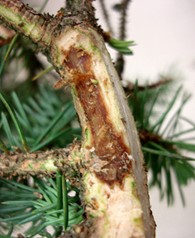
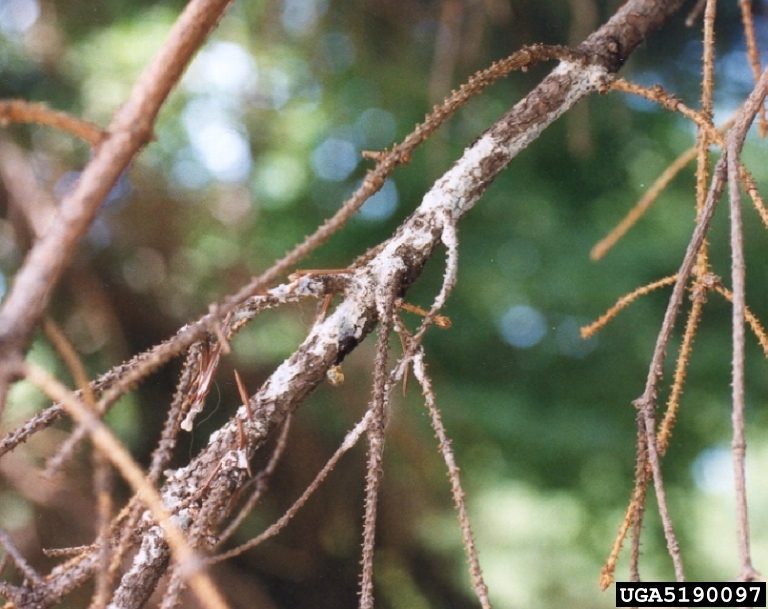
The result of these canker diseases is that over time, the infected branch dies. There are currently no fungicide options proven to effectively control these diseases in landscape sized trees; research in this area is ongoing at MSU. In some cases, there are multiple issues affecting a tree, needlecast, canker diseases, insect pressure and cultural issues. This further complicates chemical control; no single treatment will successfully address a variety of pests and cultural issues.
Below are examples of some of the common spruce scenarios that we are commonly asked to provide recommendations on.
Scenario #1
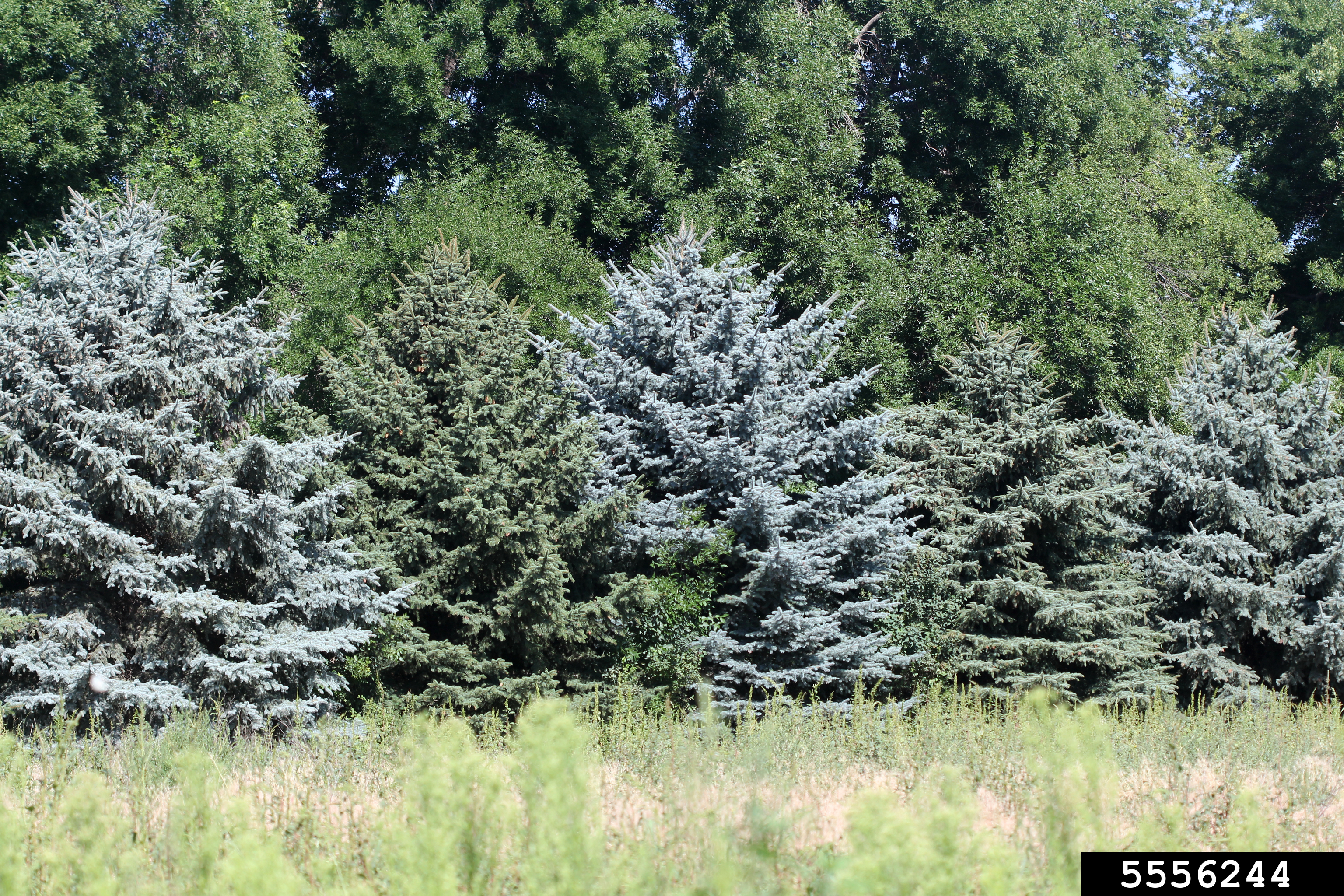
Blue spruce trees are planted in a row, the lower portion of the tree canopy is getting progressively thinner and the lower branches are dying. Too often, blue spruce trees are planted close together to give an instant green border. As the trees grow, they begin to crowd each other and are competing for resources. A mature blue spruce has a width of 20 feet. Unfortunately, this is seldom considered when trees are planted in a row. As closely spaced trees grow, they begin to shade each other and the lower or crowded branches die.
These closely growing branches also provide a perfect habitat for pathogens—a cool moist environment that favors disease development and spread. These trees are no longer creating the desired impact in the landscape.
Solution
Consider making a tough choice—remove the most severely affected trees. This opens up space, increases air flow around the trees (which can reduce disease pressure) and reduces competition for moisture and nutrients for the remaining trees.
Scenario #2
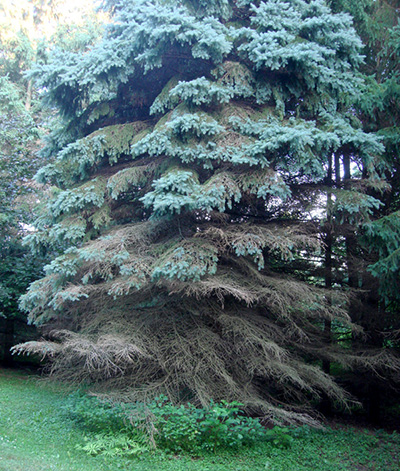
Blue spruce have a thin canopy and look see-through. Only upper branches have live buds and new growth. The trees are too large to be effectively treated with fungicides.
Solution
Provide good cultural care (irrigation and fertilization) to promote overall tree health in hopes of decreasing the rate of decline. Trees that pose a hazard to surrounding people and property should be removed. There are MSU resources available to help you learn the characteristics of alternative trees, such as “Alternative conifers for Michigan landscapes.” Replacing a diseased or ailing blue spruce with another blue spruce is not recommended. Diversifying trees in your yard is a great way to reduce disease pressure.
Scenario #3

Blue spruce tree is out in the open with full sun. The trees are beginning to lose needles on the interior of the tree, more on the east/north side and there is new growth.
Solution
If you notice small black spots (fungal fruiting bodies on the needles), it may be worthwhile to apply fungicides in the spring during shoot elongation. A certified applicator will be able to provide a fungicide and make the application. Provide good cultural care such as fertilization, mulch and watering during the morning to allow the foliage to dry out and promote overall tree health. You may also choose to prune out the most affected branches in hopes of decreasing the rate of decline.
Scenario #4
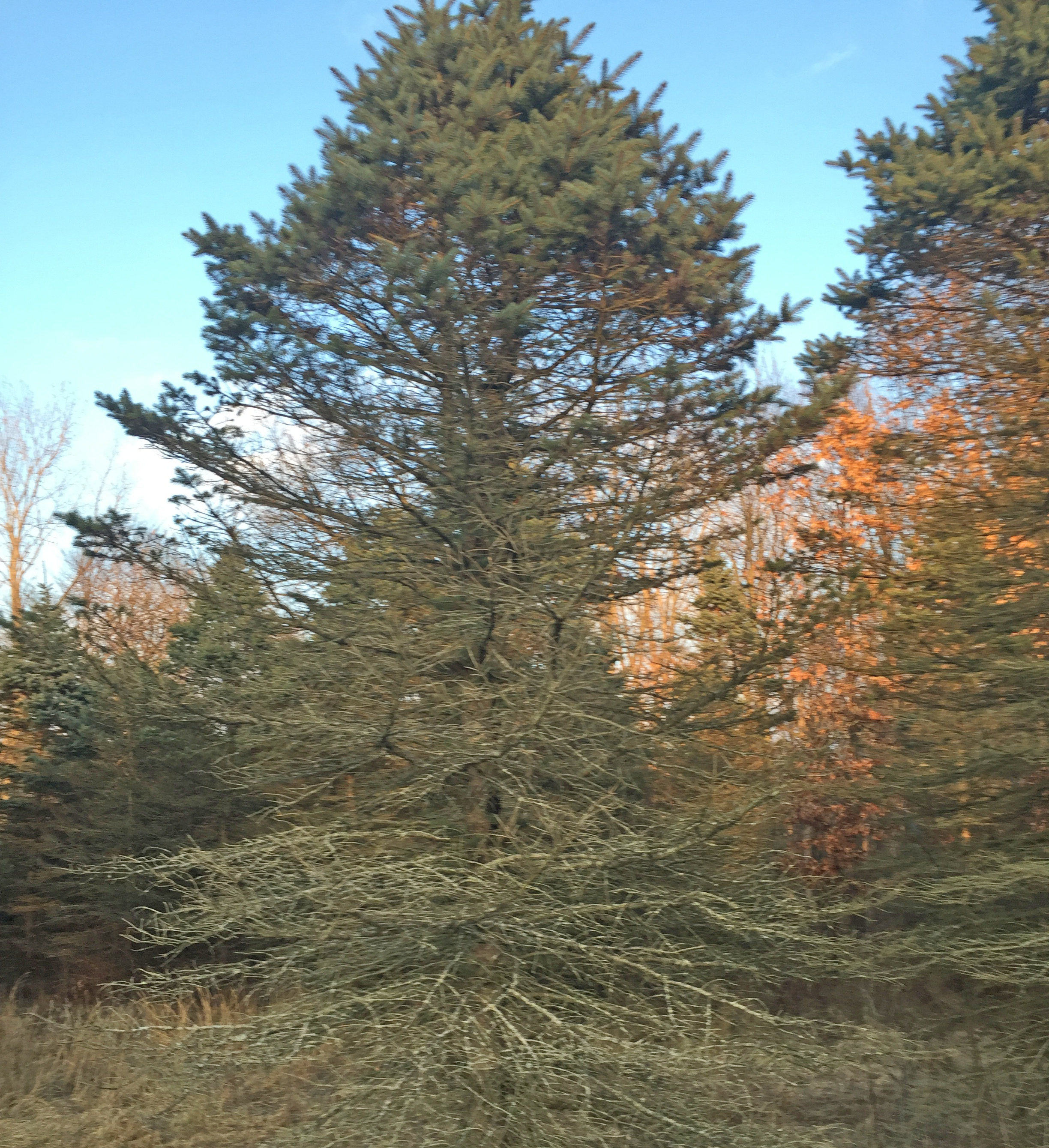
All of the lower branches are dead and the tree has a limited amount of live branches, needles and buds.
Solution
No amount of cultural care or pesticide applications will restore the vigor and aesthetic value of this tree. Unfortunately, the best course of action is to remove the tree. Consider alternative types of trees if replanting is desired.



 Print
Print Email
Email


